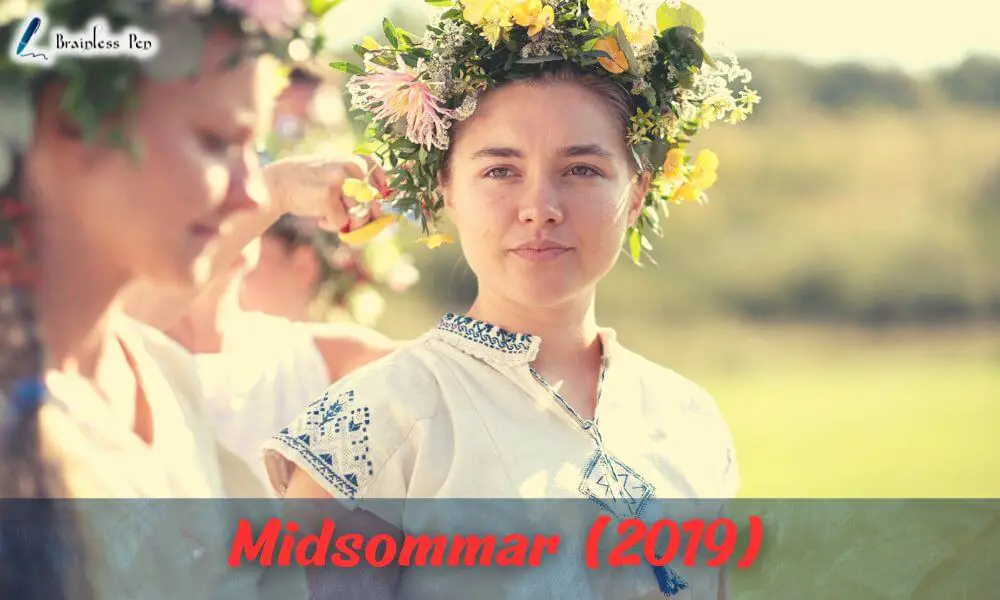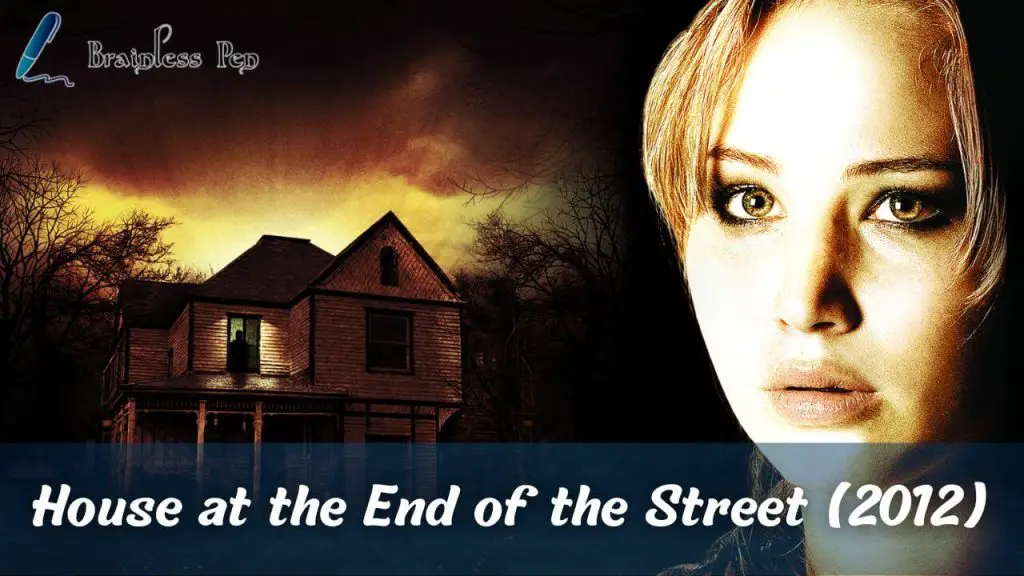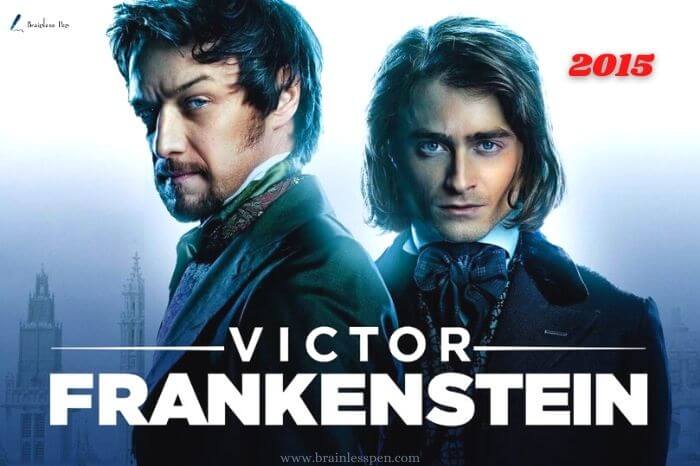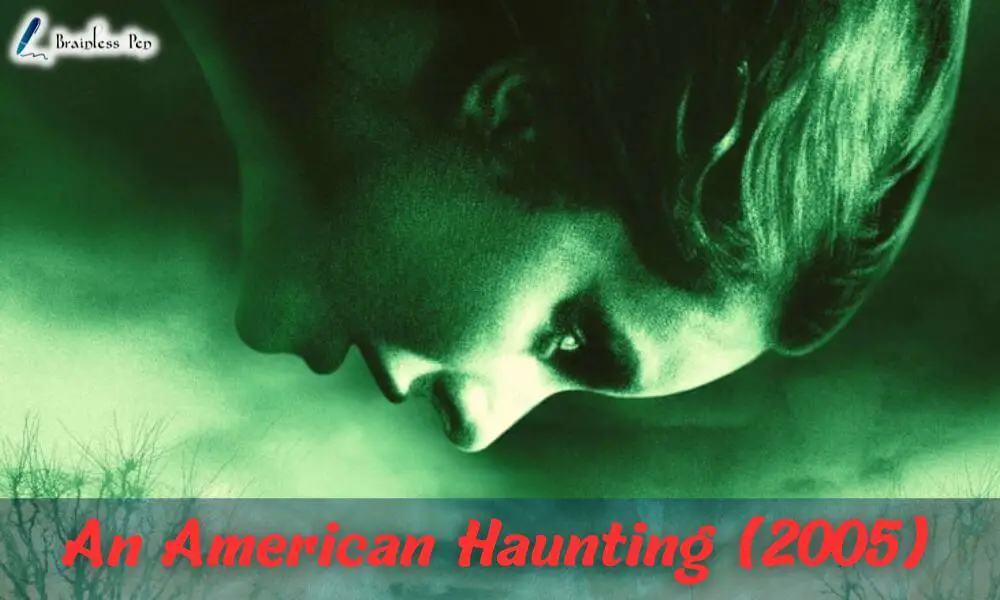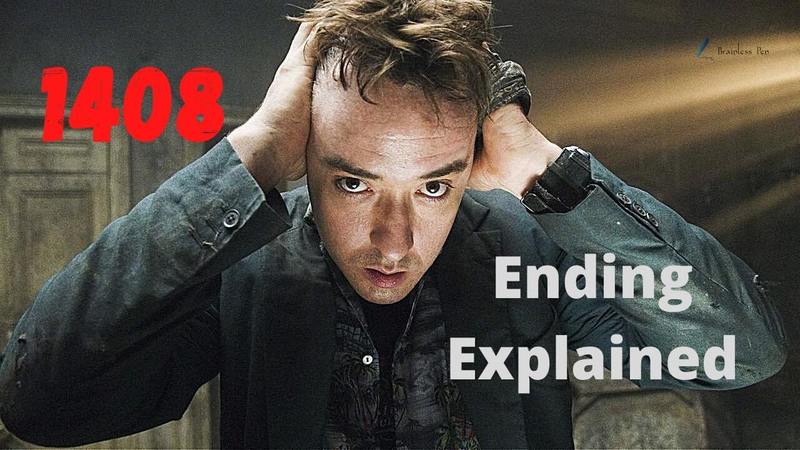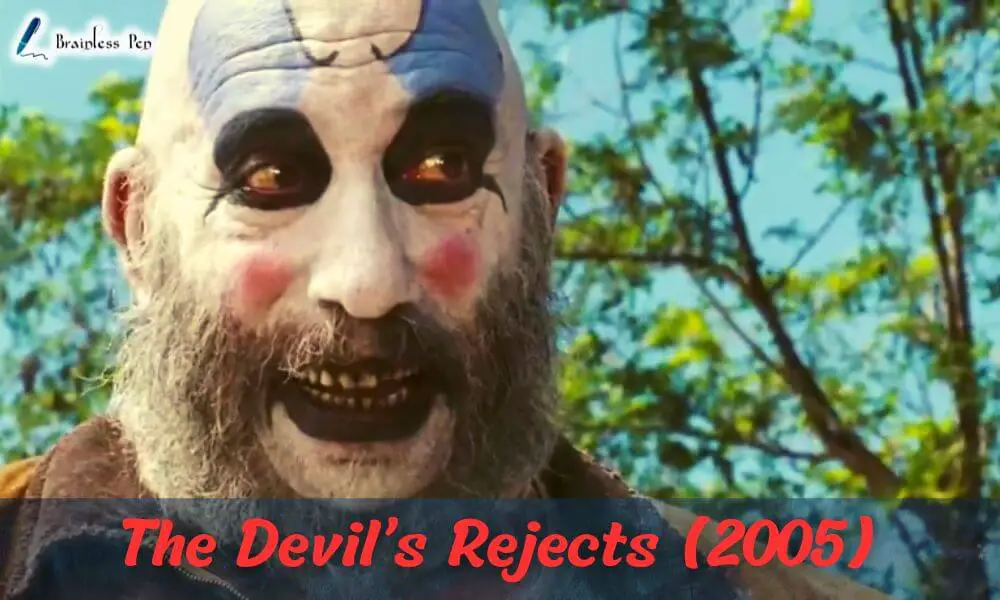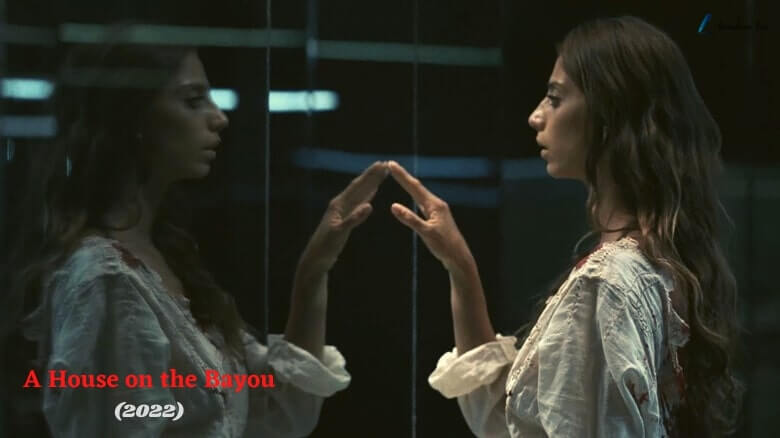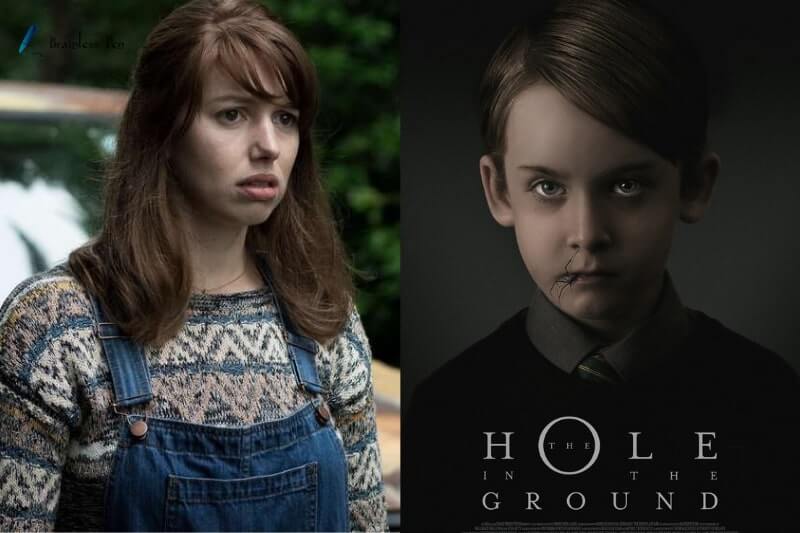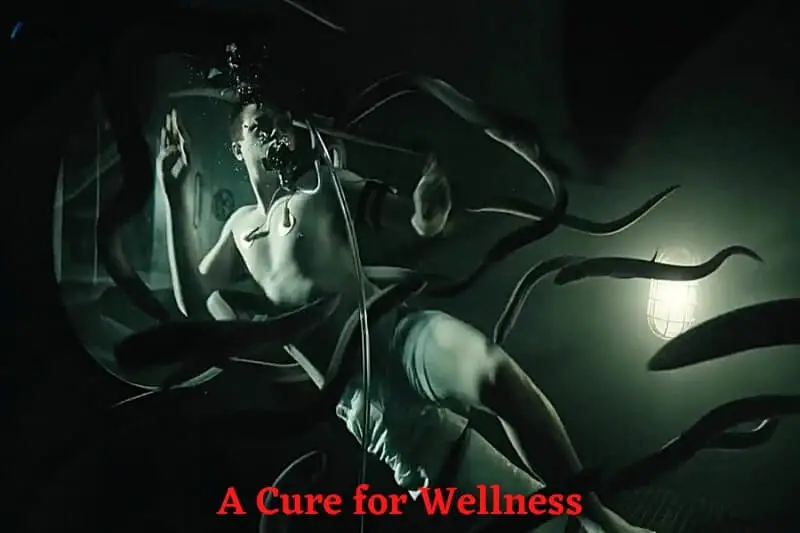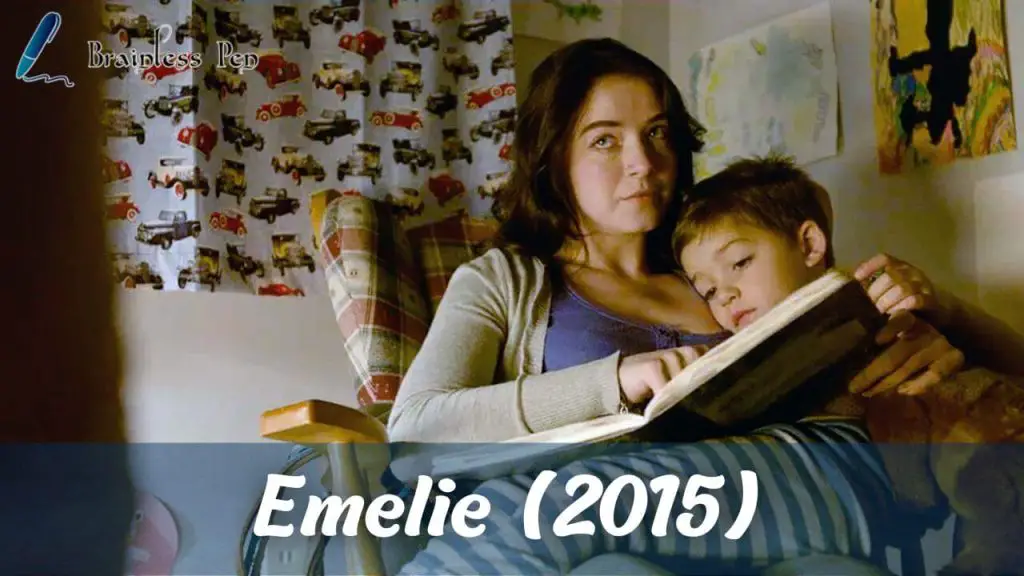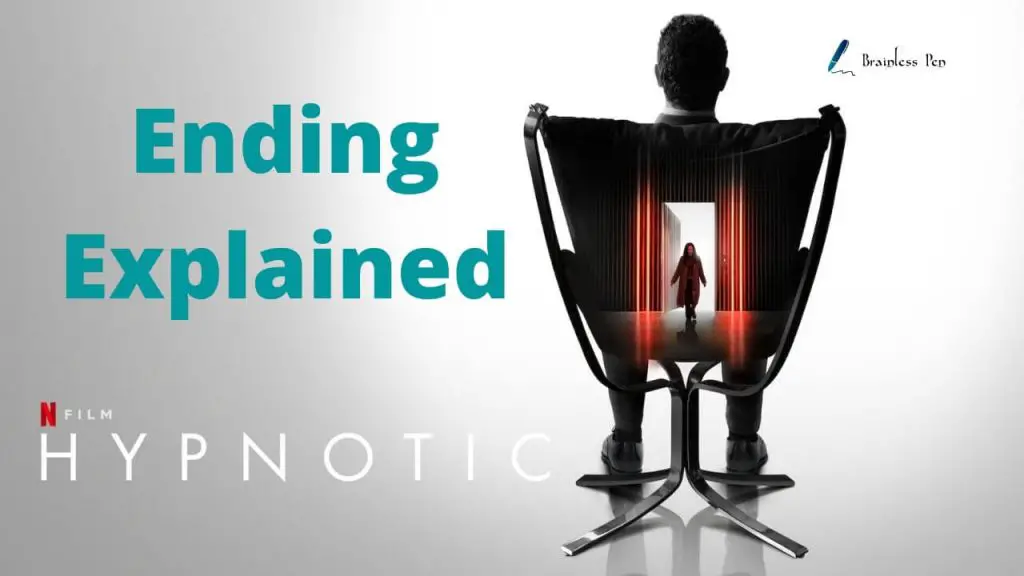Ari Aster’s Midsommar (2019) is a psychological horror film that delves into themes of loss, intimacy, and the mind. Dani, the film’s protagonist, is a young lady whose family is rocked by tragedy. She goes with her lover and his pals to celebrate the summer solstice in a small Swedish town. During the course of the festival, the gang witnesses frightening rites performed by a cult dedicated to a pagan deity.
Midsommar’s finale has been the subject of heated controversy among both supporters and detractors. Some people think it’s brilliantly symbolic storytelling, while others find it difficult to follow. In this piece, we’ll take a closer look at how Midsommar ends and the symbolism, psychology, and ideas that behind it.
Midsommar (2019) Plot Summary
* * * Spoiler Alert – If you haven’t seen the movie yet, turn back now! * * *
Let’s review what happened up to the climax first. Dani, portrayed by Florence Pugh, is having a hard time moving on after a tragic event in her family. Her lover, Christian (Jack Reynor), is cold and uncertain about their future together. Christian, Josh, Mark, and Pelle are going to Pelle’s hometown in Sweden for their annual midsummer celebration.
The community’s rites, such as the May Queen competition and the Attestupa (a ritualistic suicide), are explained to the visitors as the celebration starts. Hrga adherents worship ttestupa, a divinity created by the group’s founders. Josh’s fascination with Hrga rites and Christian’s extramarital affair with a young Hrga lady only add fuel to the fire as the days pass.
Midsommar Ending Explained: What Happened in the End?
The last act of Midsommar is a horrible display of violence and ritualistic conduct that will haunt you for days thereafter. Nine individuals, including the last two foreigners still alive, Christian Christian and Josh, must be sacrificed at the last ättestupa rite.
Dani’s admission into Hrga culture is symbolized by the crowd’s proclamation of her as May Queen. Then she participates in the process and finds out that Christian has been drugged and will be paired with one of the Hrga ladies.
As a shocking last act of revenge for his adultery and for leaving her when she needed him most, Dani chooses Christian as the ultimate sacrifice. As dawn breaks, the town rejoices in its fresh start, in which Dani is fully embraced.
Several theories and interpretations exist on the true significance of Midsommar’s last rites. The final ritual, on the other hand, is undeniable in its scary and brutal demonstration of the power of communal connectedness and the rejection of Western individualism.
The Final Ritual of Midsommar (2019)
In the film’s climactic scene, nine individuals, including four foreigners, are sacrificed by the Hrga as an offering to ttestupa. The purpose of the sacrifice is to cleanse and protect the community so that it may flourish and grow. A medication that makes them feel spacey and open to suggestion is used to entice the strangers to the ceremony.
This is a horrific and bizarre scenario of ritualistic violence. The Hrga wear white robes and beautiful flower crowns, while visitors are made to strip down to their underwear before being put in a rune-studded circle. After stabbing, drowning, and burning the first foreigner as part of a ceremony, the Hrga smash his skull with a mallet.
Symbolism and Hidden Meanings of the film Midsommar
There is a lot of hidden significance and symbolism in the final rite. Dani, in her role as the May Queen, is a major figure. Traditionally, the May Queen has represented the revival of life after a long winter as a pagan emblem of fertility and rebirth. From a place of loss and despair to one of strength and change, Dani’s story throughout the film is a metaphor for the May Queen’s.
The last rite also includes the sign of a sacrifice. Dani gives up her connection with Christian so that she may be with the Hrga, and the Hrga kill outsiders to keep their own population growing. The Hrga consider death to be an inevitable and intrinsic part of the human condition, and therefore the sacrifice serves as a symbol for the cycle of life and death.
The runes cast during the ceremony are yet another emblem of its significance. The ancient Nordic peoples employed a system of symbols called runes for divination and sorcery. At Midsommar, the runes symbolize the Hrga’s adherence to their pagan roots and trust in the might of nature. A rune sign carved into a tree serves as an invitation to the rite, symbolizing the Hrga’s power over the outsiders. The Hrga’s power to exert influence and authority over others from outside their ranks is represented symbolically by the cutting of runes.
Dani’s Transformation
Dani’s growth is a fascinating plot point that ultimately pays out. Throughout the film, Dani is shown as a weak and frail individual. Nonetheless, during the final ceremony, she changes dramatically, becoming the May Queen and a major player in the Hrga society.
The impact of community is shown through Dani’s metamorphosis. Dani’s life seemed more meaningful and connected after she joined the Hrga. Her change is also symbolic of a shift away from Western individualism and toward the collectivist ideals of the Hrga.
Let’s look at the highlights of her transformation,
- Dani’s recent loss of loved ones left her emotionally fragile at the film’s beginning. Because of her toxic connection with Christian, she feels abandoned and alone.
- Throughout the film, Dani finds comfort and strength in the Hrga tribe’s common beliefs and customs.
- At the end of the ritual, Dani is given the highest honor in Hrga culture by being named May Queen. This demonstrates her integration into the community and her contempt for Western notions of individualism.
- Dani takes part in the ättestupa ritual, which involves slaughtering nine individuals. This shows how powerful group identification and resistance to individualism can be, and it’s terrifying and dangerous.
- Dani makes the ultimate sacrifice for Christian as payback for his infidelity and lack of support at a trying time in her life. This is a defining milestone in Dani’s development into an accomplished and self-reliant adult.
- Dani is welcomed with open arms by her new neighbors as day breaks, and they all celebrate their collective new beginning. Her transformation represents a cultural transition from Western individualism to Hrga collectivism.
Psychological Interpretations
Midsummer’s end may be interpreted symbolically or symbolically. Dani’s trip is a metaphor for recovery as the film deals with loss, trauma, and mental illness. Dani can face and work through her sorrow and pain by undergoing this metamorphosis.
The Hrga society might be seen as a metaphor for the human mind. The community’s age ranges each represent a distinct facet of the human condition. The younger generation stands for naiveté, the young adults for ardor and yearning, and the older people for sage counsel. The community’s rituals might be seen as achieving psychological completeness by reuniting individual parts of the self.
Theories and Speculations
There are a variety of theories as to why Midsommar is over. The Hrga community’s rituals and occurrences have been theorized to materialize Dani’s unconscious. This theory proposes that Dani’s transformation is reflective of a psychological consolidation that has resulted in a sense of wholeness and healing for the protagonist.
To see the Hrga as a true cult with its own history and beliefs is an alternate viewpoint. According to this reading, the events of the film are an accurate portrayal of a cult’s rituals and practices, with the film’s conclusion standing in for the ultimate sacrifice committed in the name of the cult’s deity.
Director’s Intentions
Finally, it’s intriguing to consider the director’s intentions with the concluding sequence. The picture, according to director Ari Aster in interviews, is a satire of toxic relationships and the importance of belonging to a group. According to Aster, the conclusion also delves into the power of tradition and community while paying tribute to life.
Aster’s films use a surreal and dreamlike look while focusing on themes of psychological terror and introspection. The closing scene of Midsommar reflects Aster’s interest in the meaning of ritual and symbolism and the human mind.
Conclusion
The ending of Midsommar is a deep dive into symbolism, psychology, and ideas. The final rite has a lot of symbolism and hidden meaning, making it both scary and weird to see. Dani’s change is a return to the community principles of the Hrga and a rejection of Western individualism.
The film’s ambiguous conclusion reflects the director’s curiosity in the depths of the human psyche and the potency of ritual and symbolism and may be read in various ways. Midsommar is a powerful and unsettling film that delves into the shadows of the human condition and has a lasting effect on its audience.
Summary
Original Title: Midsommar
Genre: Horror/ Mystery
Runtime: 2hr 28min
Original Language: English
Written & Directed by Ari Aster
Release date: July 3, 2019 (USA)
Origin Country: United States, Sweden

